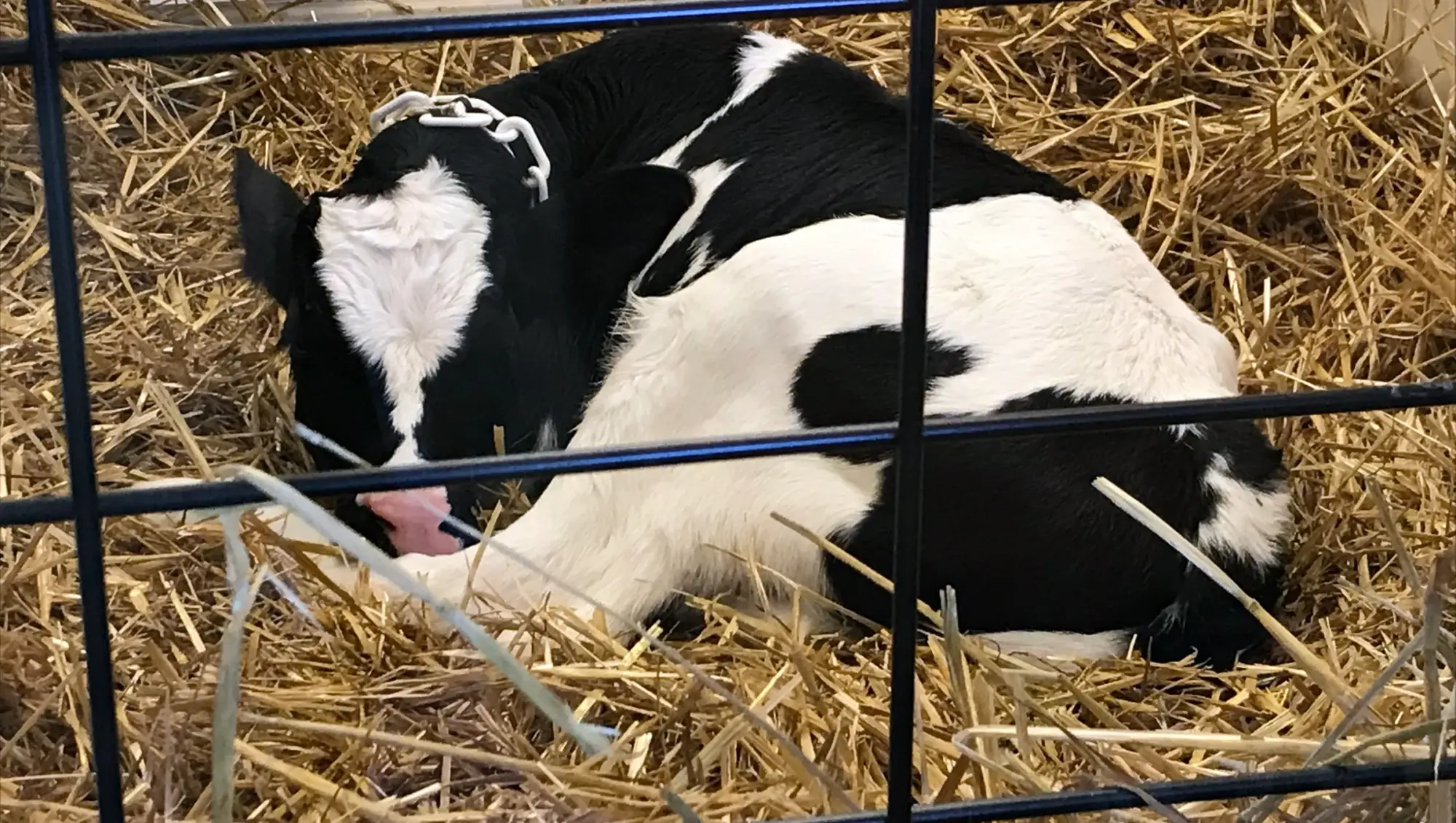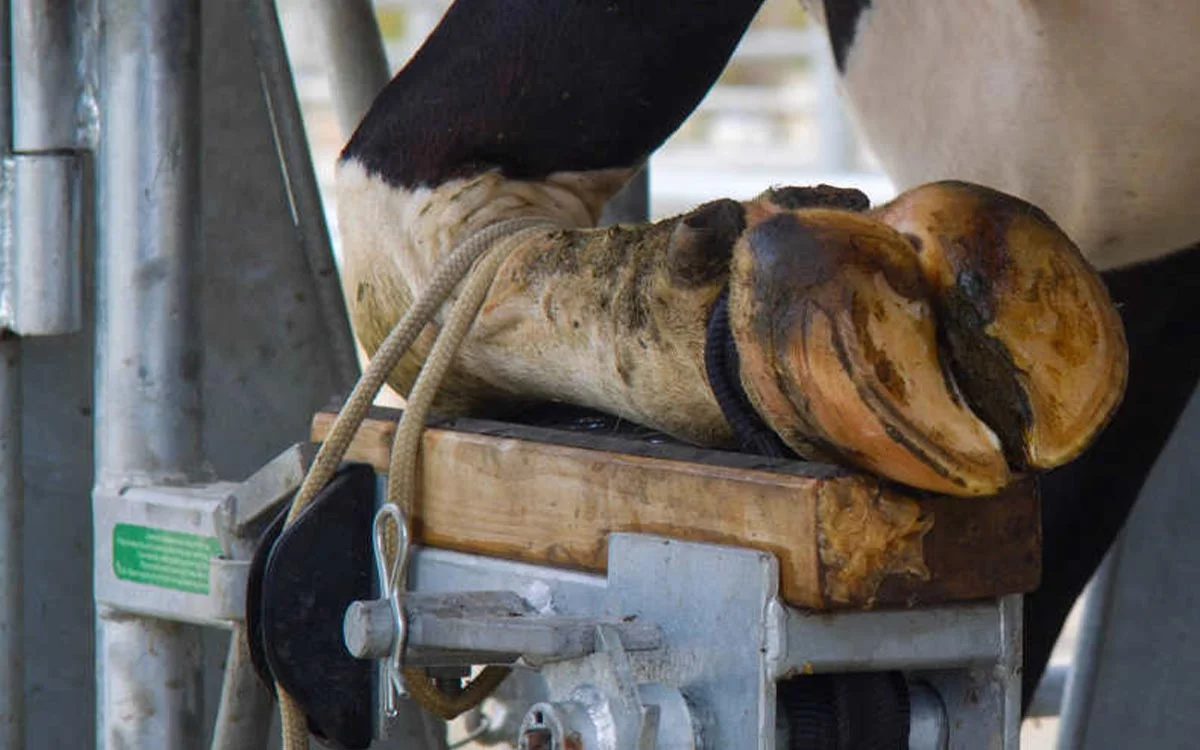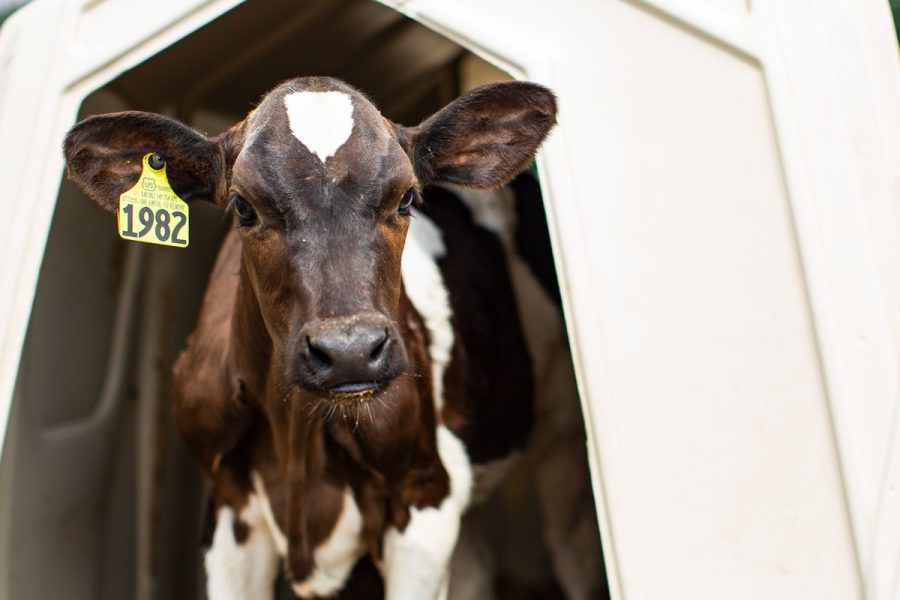Uncover the dangers of calf diarrhea and learn critical strategies to safeguard your herd and farm economy. Are you ready to combat this common threat?
Summary: Calf diarrhea is a primary concern for dairy producers worldwide, as it can significantly impact calf performance and farm economics. E. coli is the primary cause, affecting the calf’s intestines, leading to reduced nutrition absorption, fluid loss, and decreased enzyme function. Other pathogens like rotavirus, coronavirus, and Cryptosporidium parvum Type II also cause diarrhea, causing reduced meal retention time and increased fecal weight. Infected calves develop uncomfortable diarrhea symptoms, causing extreme dehydration and loss of vital nutrients, worsening their fragility. They often exhibit frailty and melancholy temperament, with faltering or wobbling when walking and sunken-eyed appearances. The severity of diarrhea can be assessed using various criteria, with the typical fecal weight in diarrhetic calves being around 20 times that of healthy calves and, in severe cases, up to 40 times higher. Calf diarrhea is connected with high fatality rates, with the incidence varying by farm and season. Losing a single calf due to diarrhea can cost up to $580, including food, medical care, and labor. Ignoring this problem poses a health risk and threatens a farm’s economic viability.
- Calf diarrhea significantly impacts calf health and farm economics globally.
- E. coli is the leading cause of intestinal damage and reduced nutrient absorption.
- Other pathogens such as rotavirus, coronavirus, and Cryptosporidium parvum Type II also contribute to diarrhea.
- Diarrhetic calves have drastically reduced meal retention time and exhibit increased fecal weight.
- Symptoms include extreme dehydration, weakness, and a sunken-eyed appearance, affecting calf vitality.
- The average fecal weight in diarrhetic calves can be up to 40 times higher than in healthy calves.
- The cost of losing one calf due to diarrhea can reach up to $580, posing a financial risk to farms.
- Addressing calf diarrhea is vital for maintaining farm health and economic stability.

Every dairy farmer understands the uneasy experience of dealing with calf diarrhea, but what if hidden hazards lie under the surface that might jeopardize your whole livelihood? Calf diarrhea is more than an annoyance; it is a complicated illness that may ruin calf performance and farm economics throughout the globe. This problem is significant for dairy producers since the early phases of a calf’s life are vital to its future production and health. Understanding the possible effects of calf diarrhea on your farm might be the difference between prospering and barely surviving. Even losing one calf to diarrhea may cost up to $580, which significantly impacts the bottom line of any dairy enterprise. Are you prepared to face this challenge straight on? Continue reading to learn about the most important measures for protecting your calves and securing your farm’s future.
The Hidden Dangers of Calf Diarrhea on Your Dairy Farm
Calf diarrhea may negatively affect the health and development of young calves. It typically affects calves under 21 days old, with E. coli being the primary cause. E. coli affects the calf’s intestines, resulting in lesions. This reduces nutrition absorption, increases fluid loss, and decreases critical enzyme function.
Other pathogens also cause calf diarrhea. These include rotavirus, coronavirus, and Cryptosporidium parvum Type II. Each offers its own set of challenges, worsening the situation. Consequently, meal retention time in the gastrointestinal system decreases from the typical 48 hours to only six hours in diarrheic calves. This fast travel through the intestines results in frequent defecation and significantly increased fecal weight—up to 40 times larger than healthy calves.
Table 1 – Faecal excretion of various feed components by normal and diarrhetic calves
| Feed components | Normal calves | Diarrhetic calves |
| Water (g) | 51 | 927 |
| Dry matter (g) | 12.5 | 93.5 |
| Total fat (g) | 4.1 | 37.4 |
| Crude protein (g) | 5.5 | 41 |
| Calcium (m. eq.) | 21.6 | 98.8 |
| Phosphorus (m. eq.) | 21 | 94 |
| Magnesium (m. eq.) | 11.4 | 24 |
| Sodium (m. eq.) | 5 | 41.6 |
| Potassium (m. eq.) | 2.2 | 39.9 |
The most obvious signs are watery stools, weakness, and an unsteady stride. These warning indicators should prompt farmers to take early action since the economic and health consequences are severe. Proper management and prompt interventions may assist in reducing hazards and ensure the calves’ well-being.
Did you know?
- Calf diarrhea can reduce nutrient absorption by up to 50%
- Mortality rates from calf diarrhea can reach up to 20% in severe outbreaks
- Passage of digesta in diarrhetic calves can be reduced to 6 hours from the standard 48 hours
- Proper colostrum intake can reduce diarrhea incidence by up to 30%
Struggling Calves: The Devastating Impact of Diarrhea on Calf Health and Farm Economy
Infected calves develop a variety of uncomfortable diarrhea symptoms, which substantially influence their general health and performance. The most apparent sign is watery feces. This illness causes extreme dehydration and loss of vital nutrients, worsening their fragility.
In addition to their bodily pain, calves often exhibit frailty and a melancholy temperament. Affected animals might be observed faltering or wobbling when walking, and they usually have sunken-eyed appearances, suggesting acute dehydration and energy depletion.
The severity of diarrhea in calves may be assessed using various criteria. For example, the typical fecal weight in diarrhetic calves is around 20 times that of healthy calves, and in severe instances, it may be up to 40 times higher. This significant rise emphasizes the acute fluid and nutritional loss that calves experience.
Calf diarrhea is connected with disturbingly high fatality rates. These may be caused by infections or septicemia, and the incidence varies by farm and season. Losing a single calf due to diarrhea may cost up to $580 [Source: Veterinary Research, 2021]. This figure includes the costs of bringing the calf until weaning, such as food, medical care, and labor. Financially, losing many calves in a season due to diarrhea may rapidly add up to thousands of dollars. Ignoring this problem poses a health risk and threatens your farm’s economic viability.
Given these considerations, it is critical to recognize and handle the severe consequences of diarrhea in calves. Farmers will better understand the relevance of preventive and management techniques in reducing these risks and ensuring healthier results for their animals.
| Risk Factor | Description | Impact on Calf Diarrhea |
|---|---|---|
| Herd Size | Larger herds increase the spread of pathogens | Higher incidence of diarrhea outbreaks |
| Sheltered Area | Lack of proper shelter for calves | Increased vulnerability to environmental stressors |
| Drainage | Poor farm drainage conditions | Higher pathogen load due to wet and unhygienic conditions |
| Nutrition | Insufficient or unbalanced dietary intake | Weakened immune system, higher susceptibility |
| Colostrum Supply | Inadequate colostrum feeding | Reduced antibody transfer, lower immunity |
| Barns Cleanliness | Irregular cleaning of barns | Increased exposure to pathogens |
| Other Farm Animals | The presence of other animals hosting pathogens | Cross-contamination risk |
Proven Strategies to Prevent Calf Diarrhea
To prevent calf diarrhea, ensure that each calf gets appropriate colostrum immediately after delivery. Colostrum consumption is crucial because it contains antibodies that help the calf’s immune system develop. Feed colostrum during the first few hours of life since the calf’s capacity to absorb these antibodies decreases quickly after delivery.
Creating a solid cow herd immunization program is another critical protective approach. Vaccines should be customized to the particular infections found on your farm, as determined by a trained veterinarian. This guarantees that the antibodies in the colostrum are effective against the many diarrhea-causing substances your herd may encounter.
Maintaining a steady and regular eating schedule is equally crucial. For the first 7-10 days, calves should receive milk around 10% of their body weight daily. To avoid stomach problems that might cause diarrhea, regularly provide fresh whole milk or a high-quality milk replacer. Clean and sterilize feeding equipment properly to prevent infection.
Adhering to these techniques not only helps reduce calf diarrhea but also improves overall calf health and farm output.
Stop Calf Diarrhea in Its Tracks: Expert Care and Cleanliness Are Key
Calf diarrhea is effectively managed and treated by separating sick animals to avoid disease transmission. Keep calf pens impeccably clean by regularly cleaning waste and sanitizing surfaces to reduce the danger of re-infection. Calf hutches with overhanging shelters may offer secure, secluded places while reducing environmental stress.
Maintaining clean feeding equipment is critical. After each usage, thoroughly clean and disinfect feeding bottles, pails, and other equipment to reduce exposure to germs and viruses that cause diarrhea.
Provide clean or barley water every 2-3 hours to maintain hydration levels. This helps to restore lost fluids and preserve electrolyte balance, which is critical for calves suffering from diarrhea. Regularly check their moisture levels for sunken eyes and diminished skin suppleness.
For moderate episodes of diarrhea, consider using herbal extracts like ginger. Ginger has natural anti-inflammatory and digestive characteristics that help ease the gastrointestinal system without causing adverse effects like more potent drugs.
It is critical to monitor internal parasite infections closely. Deworming programs should be closely adhered to, and manure should be managed to limit parasite load in the environment.
Avoid lengthy or high-dose antibiotic treatments since they may lead to resistance and other consequences. However, a consultation with a skilled veterinarian is required to develop precise treatment remedies. Depending on your herd’s requirements, your veterinarian may provide specific suggestions for antibiotic usage, rehydration procedures, and dietary changes.
Further Reading and Support for Managing Calf Diarrhea
For further advice and support on managing calf diarrhea, consider exploring the following resources:
- How to Prevent Diarrhea in Dairy Calves – A comprehensive guide to preventative measures.
- Calf Diarrhea: A Review of Epidemiology and Pathogens – A research article with in-depth insights on the disease.
- National Animal Health Monitoring System: Calf Diarrhea Fact Sheet – Veterinary guidelines and statistics from the USDA.
- Management and Control of Calf Diarrhea: A Review – Detailed recommendations for managing the disease.
- The Milkhouse – An online forum for sharing experiences and seeking advice from fellow farmers.
The Bottom Line
Calf diarrhea is a severe danger to the health of your herd and the financial viability of your dairy operation. The keys to addressing this disease include proactive management measures such as correct feeding, strict hygiene, and prompt veterinarian treatment. You may drastically limit the occurrence of this debilitating ailment by ensuring your calves get enough colostrum, adhering to a rigorous feeding schedule, and applying suitable cleanliness measures.
Remember that losing even one calf may have a significant financial and emotional impact. As a result, calf diarrhea must be addressed with the utmost seriousness. Investing in preventative measures protects cattle and improves farm output and sustainability.
Take action now. Consult with your veterinarian, assess your present procedures, and implement the advised techniques to keep your young calves healthy and flourishing. Your efforts today will result in healthier calves and a brighter future for your farm.














